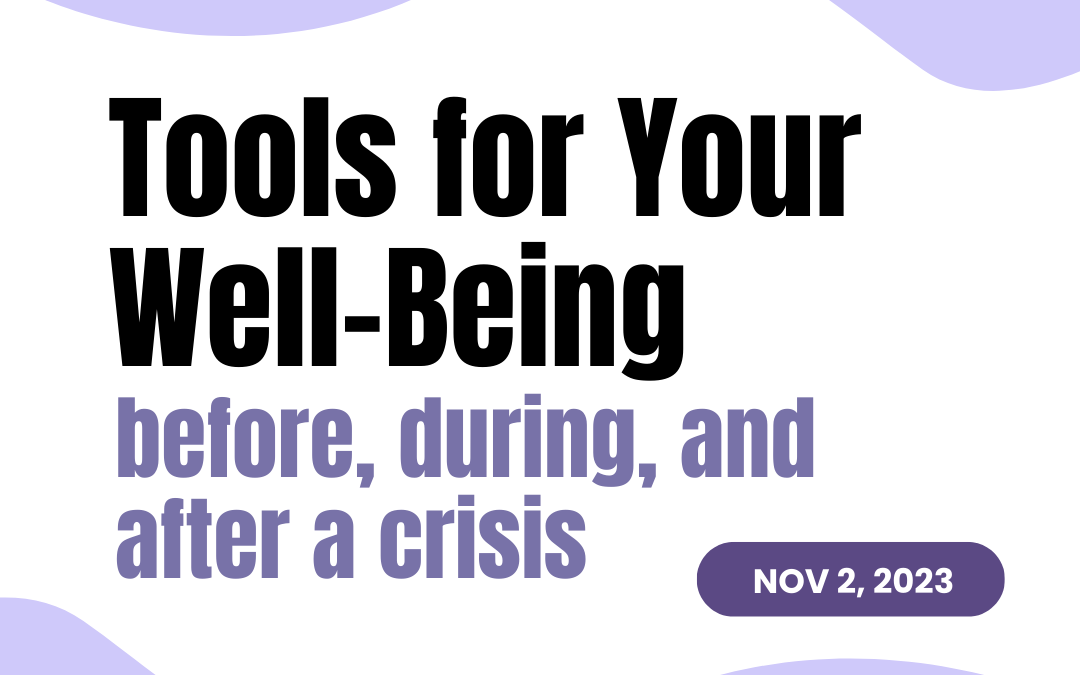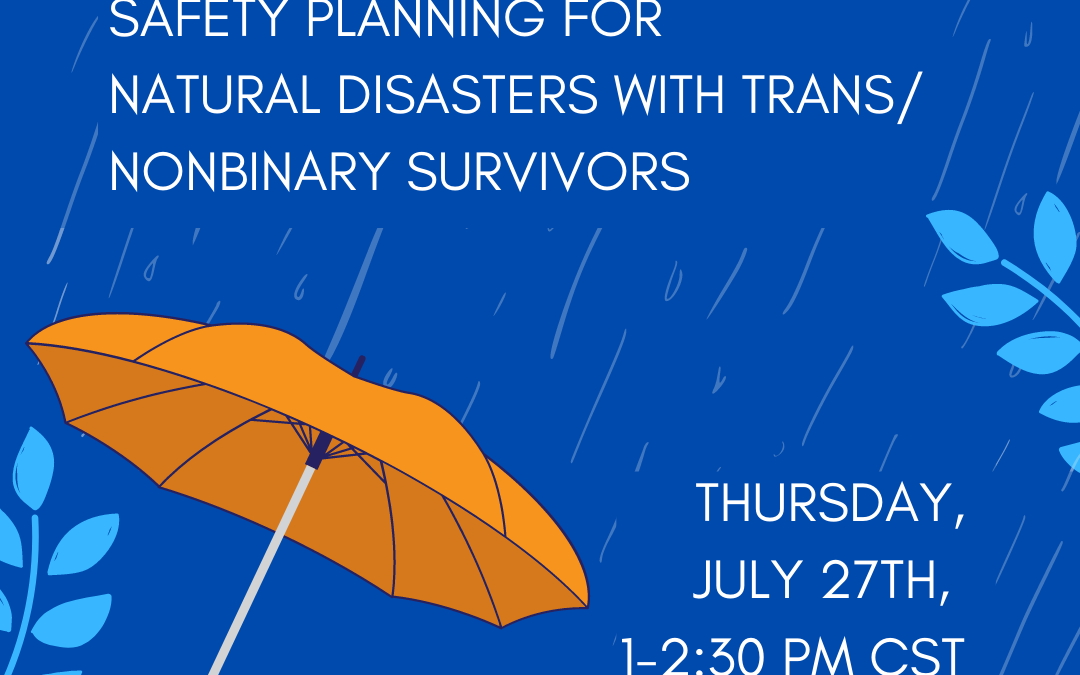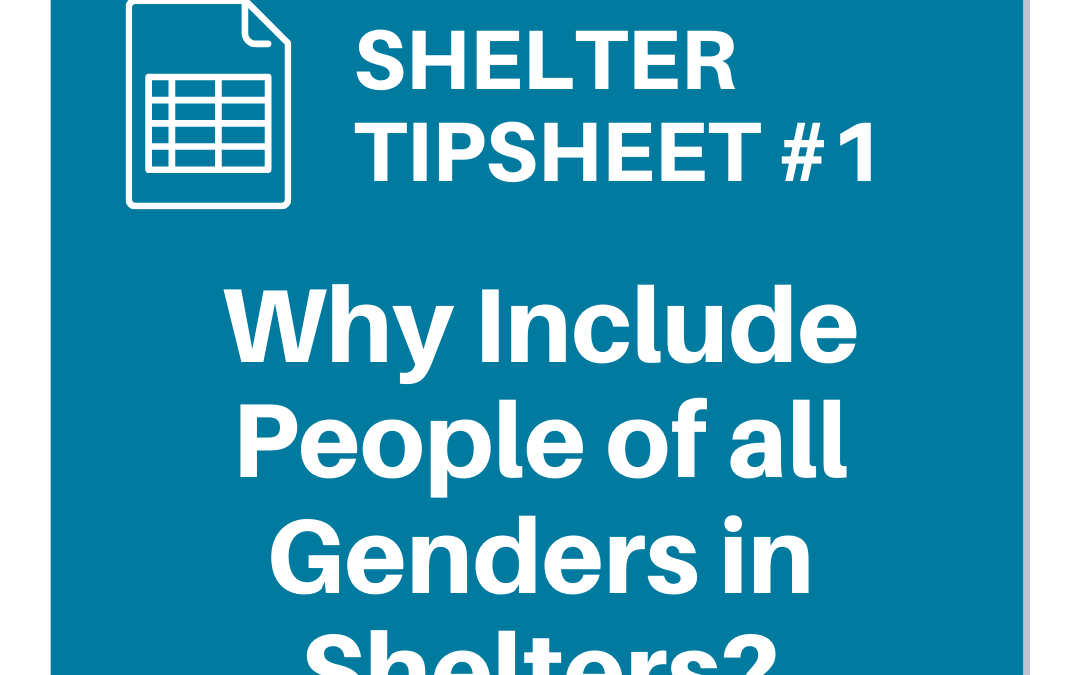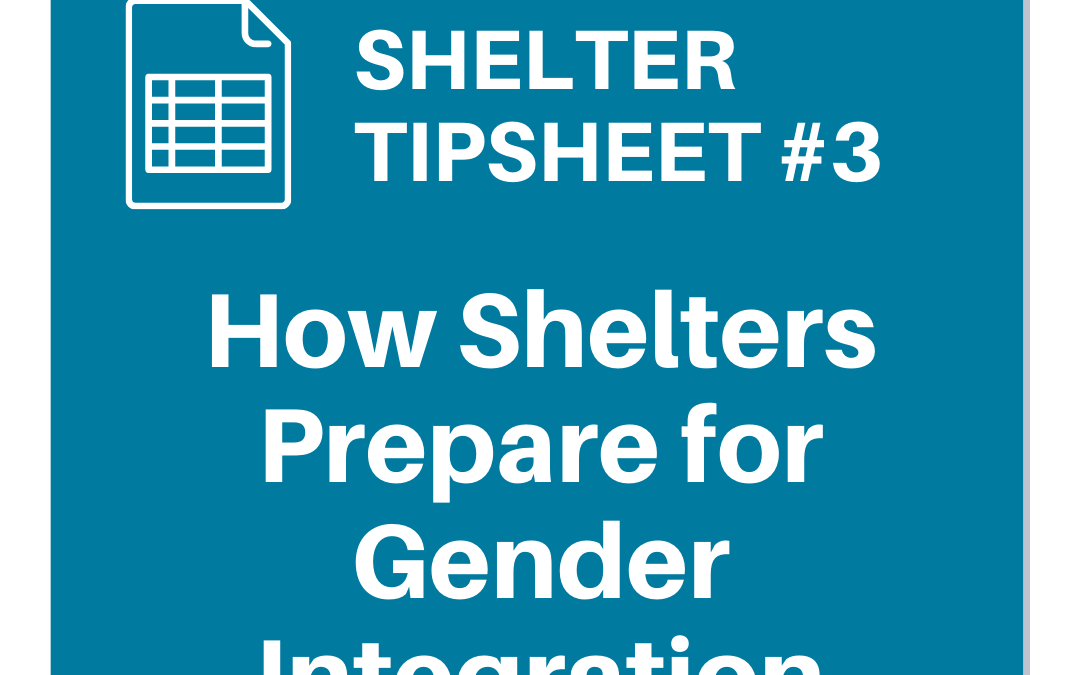
by Caleb Weinhardt | Nov 2, 2023
Emotional safety planning is a process of thinking ahead about the supports and tools that someone can use in a crisis to care for their emotional well-being. With the increase in hate towards trans/nonbinary communities, it’s important that we take care of ourselves...

by Caleb Weinhardt | Jul 27, 2023
Intimate partner violence and sexual violence increase during disasters. Trans/nonbinary communities have a unique set of experiences and needs related to both natural disasters and violence. In this training, we discuss safety planning with trans/nonbinary survivors...

by michael munson | Dec 30, 2016
The latest numbers show that non-binary individuals – those who do not identify as either male or female – now comprise the majority of the transgender community. FORGE’s other two webinars in this series – Sheltering Trans Women and Sheltering Trans Men – will help...

by michael munson | Dec 28, 2016
Whether your shelter is sex-segregated, gender-integrated, or not set up with a traditional communal-living model, sheltering trans men requires thinking in some new ways. This 90-minute webinar uses three case studies to illustrate how placement decisions can be...

by michael munson | Dec 26, 2016
If your shelter receives funding for the Office for Violence Against Women, you are legally required to shelter trans women. If that statement makes you nervous, then this webinar is for you! Experienced shelters know it’s easier than you think, and this 90-minute...

by FORGE Intern | Oct 26, 2016
This publication compiles the experiences and advice of 20 gender-integrated shelters. Topics addressed include: Was integrating worth it? How agencies decided to integrate. Pushback; Preparing for change; structures, privacy, and safety; and preventing and addressing...

by FORGE Intern | Oct 3, 2016
Why should a domestic violence shelter become gender-integrated? It aligns with the field’s values; it serves victims who are otherwise without resources; it’s rewarding; it dispels stereotypes and provides learning opportunities; it avoids revictimation;...

by FORGE Intern | Oct 3, 2016
Seven factors motivated most gender-integrated shelters: valuing equity; wanting to respond to unmet needs; increased requests; the opportunity provided by an expansion or new facility; LGBT partners; advocate pressure; and attention to emerging populations.

by FORGE Intern | Oct 3, 2016
Learn from those who have gone before: this tipsheet features both 10 tips and quotes from experienced gender-integrated shelter staff on how you can integrate your own shelter smoothly.












Recent Comments